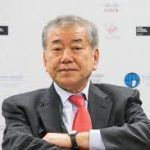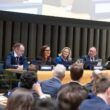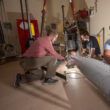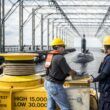Time may be right for a Northeast Asia nuclear-weapon-free zone
By Chung-in Moon, August 25, 2016
In July, Seoul agreed to US deployment in South Korea of a missile defense system known as Terminal High Altitude Area Defense (THAAD). The decision precipitated fierce resistance from opposition political parties as well as the Chinese government. Members of opposition parties demanded that the government immediately reverse its decision and enter into consultations with the National Assembly. China urged that deployment be suspended and warned of retaliatory measures. But President Park Geun-hye flatly rejected these demands, reaffirming her position that North Korea's mounting nuclear and missile threats leave no alternative to deployment of THAAD.
Park's strategy regarding the North amounts to a full-court press involving tougher sanctions, international isolation, and missile defense. Dialogue, negotiation, and peaceful resolution of differences have vanished from her lexicon. She even appears willing to risk conflict escalation. However, a viable approach remains for persuading Kim Jong-un to abandon nuclear weapons—pursuing a Northeast Asia nuclear-weapon-free zone.
North Korea has long demanded equal treatment under international law where reduction and elimination of nuclear threats are concerned. Pyongyang has also demanded, as a condition for disarmament, that it receive legally binding guarantees that other countries will issue no nuclear threats against the North. These demands could be met through a multilateral treaty establishing a nuclear-weapon-free zone in the region. Under such a treaty, nuclear weapon states would adopt no-first-use policies and issue negative security assurances—guarantees that they would not use or threaten to use nuclear weapons against states without nuclear weapons. Non-nuclear-weapon states, meanwhile, would commit to remaining nuclear-free—or, in North Korea's case, a nuclear-armed country would commit to nuclear disarmament.
The concept of a Northeast Asia nuclear-weapon-free zone was first introduced in US arms control circles as long ago as 1972. In 1996, disarmament expert Hiro Umebayashi articulated a vision of a nuclear-weapon-free zone that incorporated a "3+3" formula. Under this model, Japan and the two Koreas would establish a nuclear-weapon-free zone while China, Russia, and the United States would extend negative security assurances to the region's non-nuclear states.
In 2010, in response to North Korea's nuclear tests, the Nautilus Institute and its director Peter Hayes advanced a "2+3" formula. Under this model, a nuclear-weapon-free zone treaty would establish South Korea and Japan as non-nuclear weapon states; the United States, China, and Russia would join as nuclear weapon states; and North Korea, though nuclear-armed at the treaty's outset, would come into compliance later as a non-nuclear weapon state. This idea has since been refined to include a regional council that deliberates on security issues; a regional non-hostility agreement; the replacement of the Korean Armistice with a final peace treaty; an end to sanctions against North Korea; and a package of economic assistance to Pyongyang that might include a side agreement on non-military nuclear activity in the North. Moreover, the zone established under such an agreement would entail an inspectorate, monitoring and verification mechanisms, and establishment of negative security assurances for North Korea (with those assurances instituted in lockstep with Pyongyang's achievement of denuclearization milestones).
This approach deserves serious consideration—not least because it treats all the region's nuclear threats in an even-handed way. The stalled six-party talks, in contrast, have focused on threats emanating from North Korea, with other regional security issues playing a subordinate role.
An obvious challenge to the Nautilus approach is that North Korea's status as a nuclear-armed nation has only grown stronger in recent years. Still, nothing prevents Pyongyang from complying with the requirements of a nuclear-weapon-free zone treaty at a calibrated pace, moving forward only as the nuclear weapon states provide negative security assurances and establish no-first-use policies. Indeed, such an approach might well satisfy the demands Pyongyang made in its July 6 proposal on denuclearization (a proposal I discussed in Round Two).
A first step toward establishing a nuclear-weapon-free zone would be for the six parties to request that the UN secretary-general and the UN Office of Disarmament Affairs convene an expert meeting to examine the concept behind the zone. Parallel efforts could be conducted by civil society organizations such as the Asia-Pacific Leadership Network for Nuclear Non-Proliferation and Disarmament.
Establishing a nuclear-weapon-free zone in Northeast Asia might sound excessively idealistic. But amid acute military confrontation on the Peninsula and the threat of catastrophic war, what's so realistic about endless cycles of stalled negotiations?
Topics: Nuclear Weapons
Share: [addthis tool="addthis_inline_share_toolbox"]














